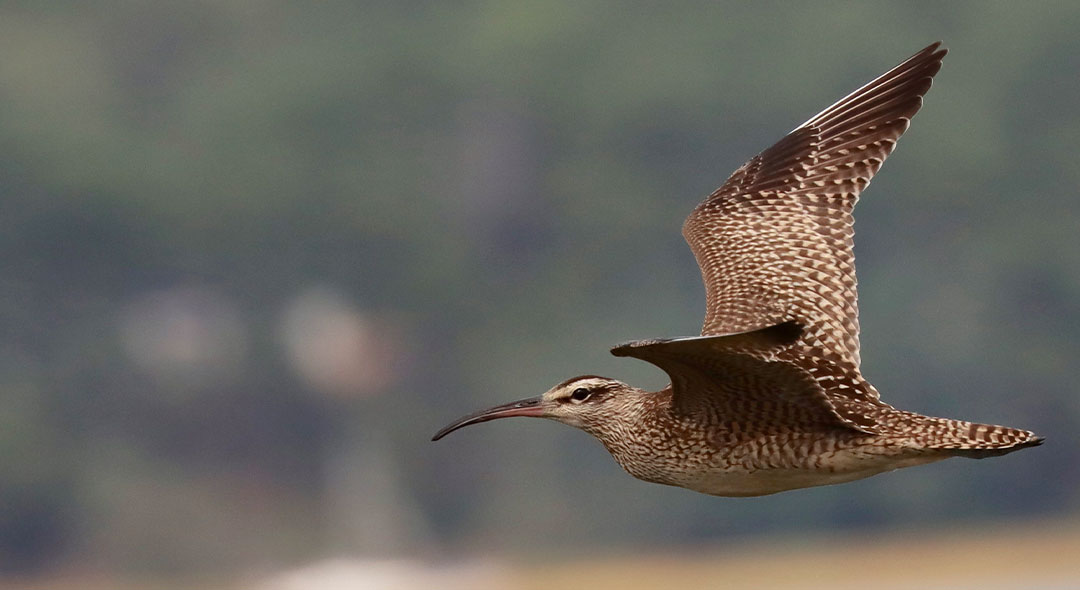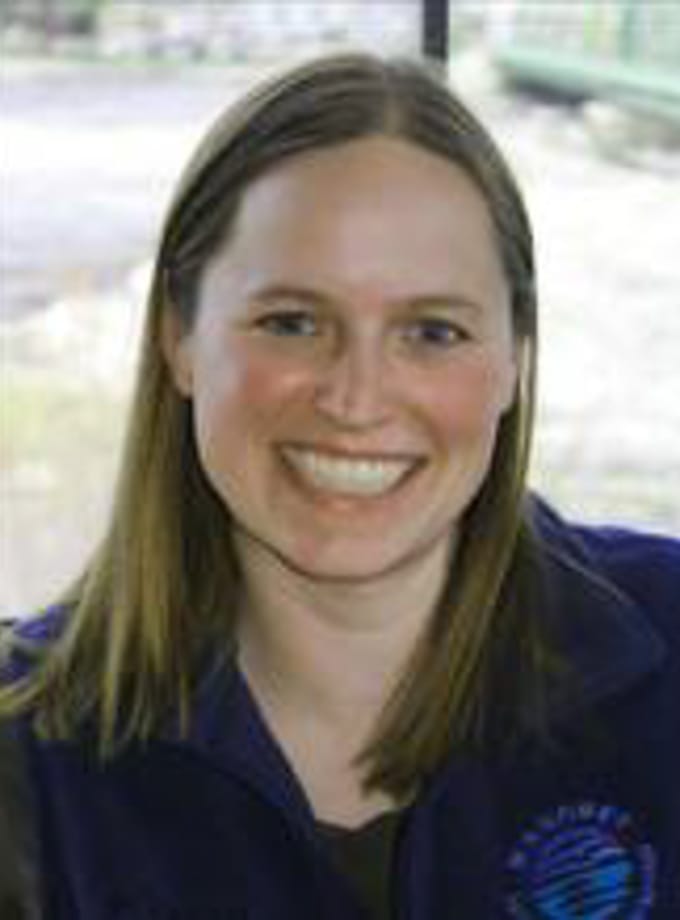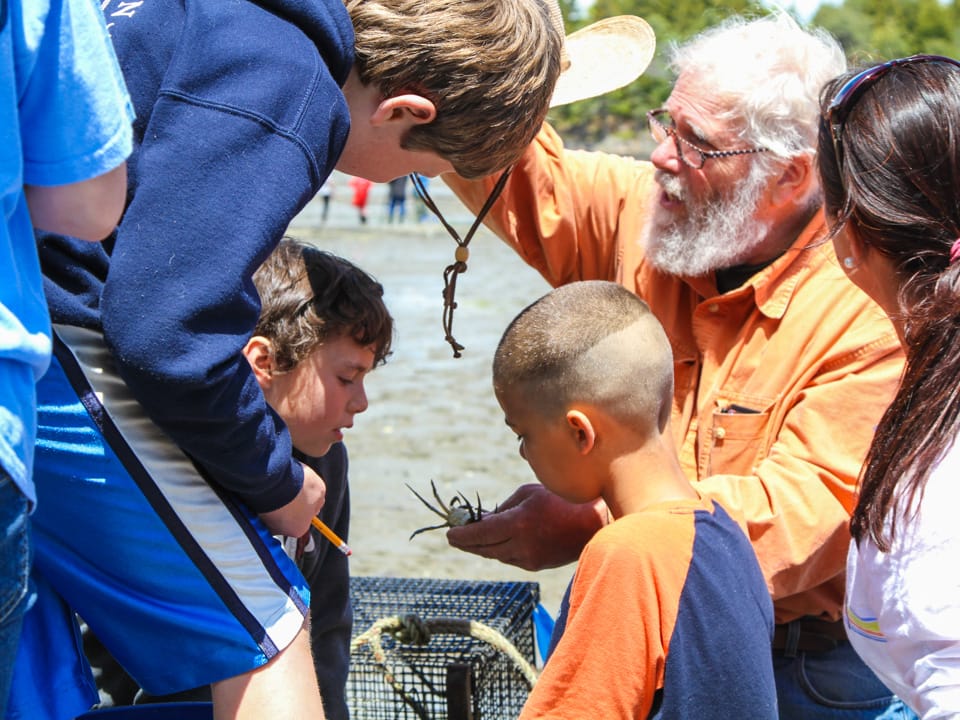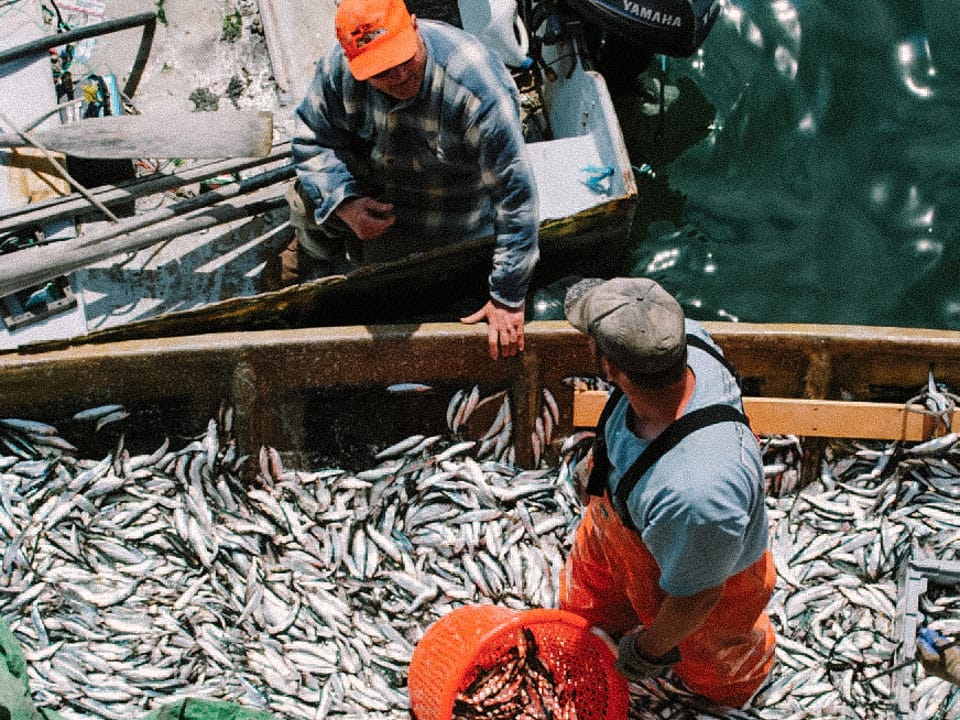What do you get when you bring together elementary school students, scientists, shellfish harvesters, and Manomet supporters to a soft-shell clam farm? A very muddy (and educational) good time!
On a gloriously sunny early June day, fourth, fifth, and sixth grade students from Georgetown Central School, armed with clipboards and calipers, ventured out onto the mud of the Heal Eddy Clam Farm. The Heal Eddy Clam Farm, located in Georgetown, Maine, is not only a testing ground of a new aquaculture technique for growing soft-shell clams, it’s also an outdoor classroom where for the last three years students do hands-on learning about soft-shell clams and aquaculture.
“Soft-shell clams are the second largest fishery in the state of Maine, and critical to the economy of this community,” said Chris Warner, professional shellfish harvester and co-founder of Heal Eddy Clam Farm. “Many of these kids have family members and neighbors who harvest clams for a living.” On this trip the students monitored water quality and thought about what clams need to be healthy, measured the number and size of green crabs caught at the farm, and measured the growth rates of hatchery clams in different aquaculture scenarios.
“It’s exciting to see these kids out on the flats. Hands-on participation in measuring clams and monitoring green crabs and water quality is bringing science to life for them,” said Anne Hayden, Program Manager with Manomet and Coordinator of Downeast Fisheries Partnership. “This research is addressing the impacts of green crabs on the soft-shell clam fishery and exploring aquaculture as a potential solution. And whether or not they become shellfish harvesters, they will understand the importance of this fishery to their community. They are having fun but they are also learning how to be good stewards of our natural world.”
The students’ visit to Heal Eddy coincided with a Manomet “In the Field” opportunity for supporters of Manomet. These events provide opportunities for Manomet’s supporters to learn about our work and experience Manomet’s mission in action. The Manomet supporters learned details about the creation of the farm, the ongoing scientific studies, and the potential economic benefits to shellfish harvesters. They then got to explore the different activities with the students. “I really appreciated the very interesting and fun day observing clam science and education in action at Heal Eddy,” said Ben Niles, a Manomet supporter. “The enthusiasm of all involved, especially the young students, was infectious.”

Marking green crabs for ‘mark and recapture’ experiment
Some of the students’ favorite activities included getting very muddy and dirty, digging up the “baby” clams they helped put in the mud a year ago and seeing how much they grew, and being interviewed by a local TV station. It was a great day for all involved. “For me, what makes the Heal Eddy Clam Farm so special is that it is a place where scientists, professional shellfish harvesters, marine resource managers, students, and other local volunteers come together to learn from each other,” said Ethel Wilkerson, Manomet Senior Program Manager. “Bringing people together is what I think Manomet does best.”





 Back to all
Back to all


